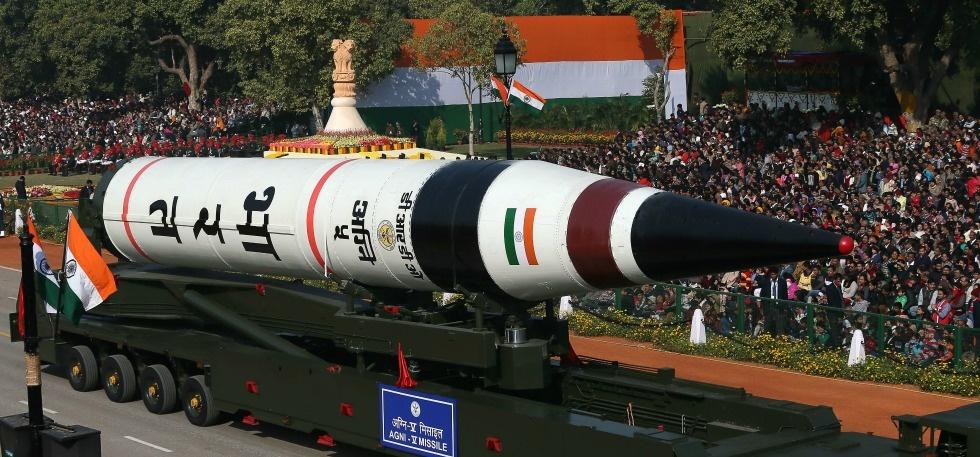Space Warfare and India: Navigating the Complexities of Space Weaponization

India’s ASAT development is primarily driven by the need to deter and counter potential threats to its space assets. India’s extensive reliance on satellites for critical functions, such as communication, navigation, and surveillance, makes them vulnerable to hostile ASAT actions.
India’s successful Anti-Satellite (ASAT) test, Mission Shakti, conducted on March 27, 2019, marked a significant milestone in the country’s space capabilities, propelling it into the exclusive group of nations with ASAT technology. While this achievement positioned India alongside the United States, Russia, and China, it is just the beginning of a long and tricky but necessary path to tread on.
India’s ASAT Capabilities: A Spectrum of Possibilities
India’s ASAT capabilities extend beyond the kinetic kill method demonstrated in Mission Shakti. The country is actively pursuing a comprehensive counter-space strategy that encompasses a diverse range of ASAT technologies, including:
- Co-orbital ASATs: These satellites orbit alongside their targets, providing a persistent and flexible ASAT capability. India is reportedly developing co-orbital ASATs that could use various methods, such as kinetic impact, lasers, or electromagnetic pulses (EMPs), to disable or destroy adversaries.
- Directed Energy Weapons (DEWs): DEWs, such as high-power lasers or particle beams, offer a non-kinetic ASAT option, promising long-range precision and minimal collateral damage. India is actively researching and developing DEWs for ASAT applications, potentially revolutionizing the future of space warfare.
- Electronic Warfare (EW) and Cyber Warfare: EW techniques can disrupt satellite communications and navigation signals, while cyber attacks can compromise satellite systems and software. India is strengthening its EW and cyber capabilities to enhance its overall counter-space dominance.
India’s ASAT Strategy: A Calculative Approach
India’s ASAT development is primarily driven by the need to deter and counter potential threats to its space assets. India’s extensive reliance on satellites for critical functions, such as communication, navigation, and surveillance, makes them vulnerable to hostile ASAT actions (especially from China). Developing ASAT capabilities provides India with a means to deter potential aggressors from targeting its satellites and retaliate if necessary.

India’s Role in Shaping Global Space Governance
India being the only country to be and act neutral recognizes the importance of responsible space governance and has been actively engaging in international efforts to prevent an arms race in space. India is a signatory to the Outer Space Treaty and other international treaties governing space activities. It also participates in various international forums and initiatives aimed at promoting peaceful and sustainable uses of outer space.
India has proposed comprehensive international guidelines for the prevention of harm to space objects, emphasizing the need for transparency, confidence-building measures, and risk-reduction strategies. India also supports establishing an international mechanism for the peaceful settlement of space disputes.
Beyond these diplomatic efforts, India is also making tangible contributions to global space governance by sharing its expertise and experience in space technology and applications. India has developed NAVIC, a regional satellite navigation system, and has launched numerous satellites for scientific and earth observation. By sharing its space capabilities, India fosters international cooperation and promotes the peaceful use of outer space.
Implications for Regional and Global Security Dynamics
India’s ASAT capabilities have the potential to influence regional and global security dynamics in both positive and negative ways. India’s ASAT capabilities play a role in maintaining the balance of power in the Indo-Pacific region. India’s growing space prowess, including its ASAT technology, could deter potential adversaries, such as China, from engaging in hostile actions in space.
The development of ASAT technology could deter potential adversaries, it may raise the possibility of an arms race in space that could lead to increased tensions. But, given the imminent threat from the neighbourhood bully China and the silent war with the chameleon US, the positives outnumber the negatives by a mile! However, exercising caution and pursuing diplomatic solutions is crucial to avoid escalating tensions and ensure a peaceful and stable space environment.

Conclusion: Navigating the Challenges and Opportunities of Spacefaring
India’s ASAT capabilities represent a significant step forward in the country’s space program and position it as a major player in the global space arena. India’s tentative approach and its commitment to responsible space governance suggest that it seeks to utilize its ASAT capabilities defensively and promote stability in the space domain. By carefully navigating the challenges and opportunities of spacefaring, India can and most likely will contribute to a more peaceful and sustainable future for outer space.







